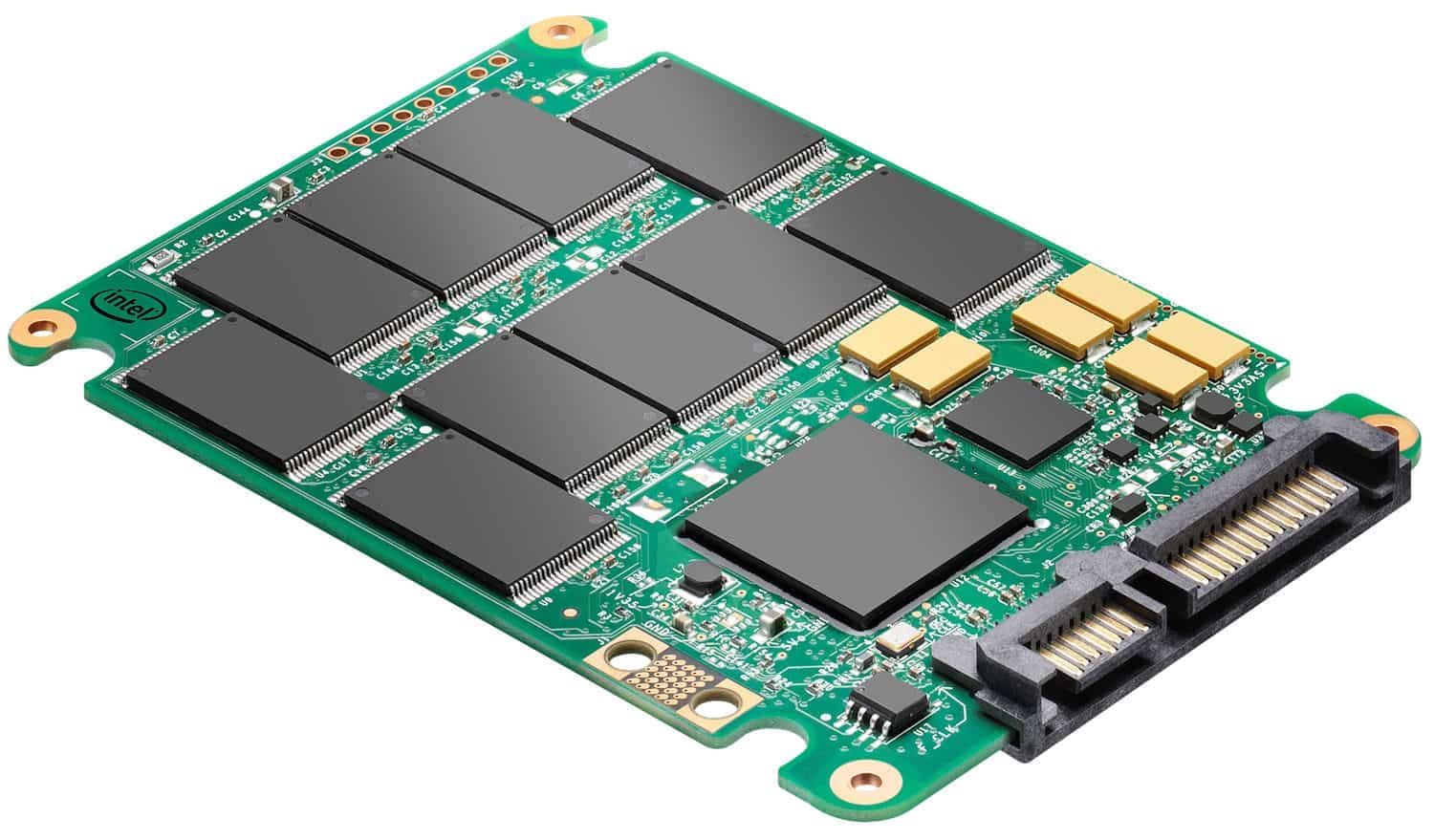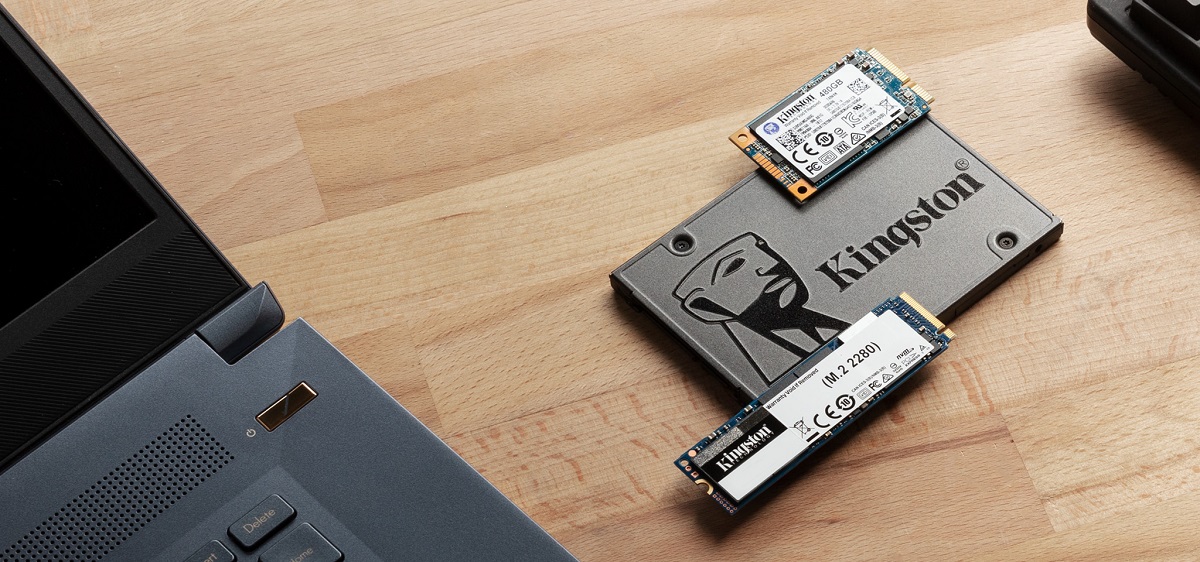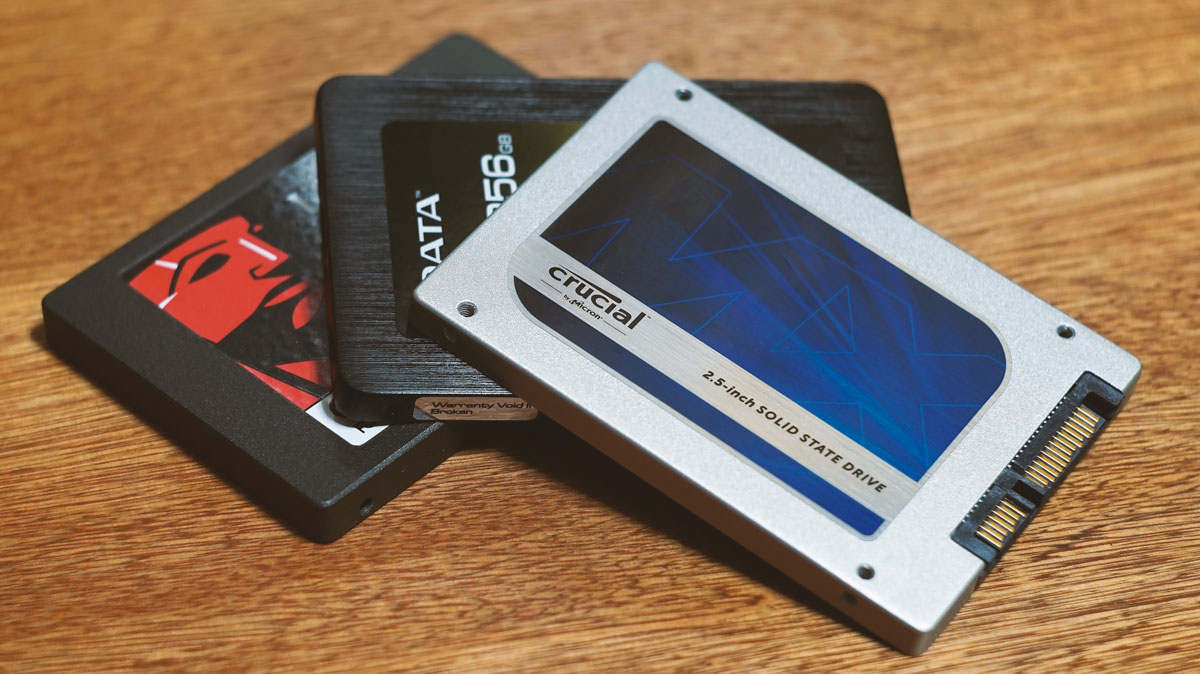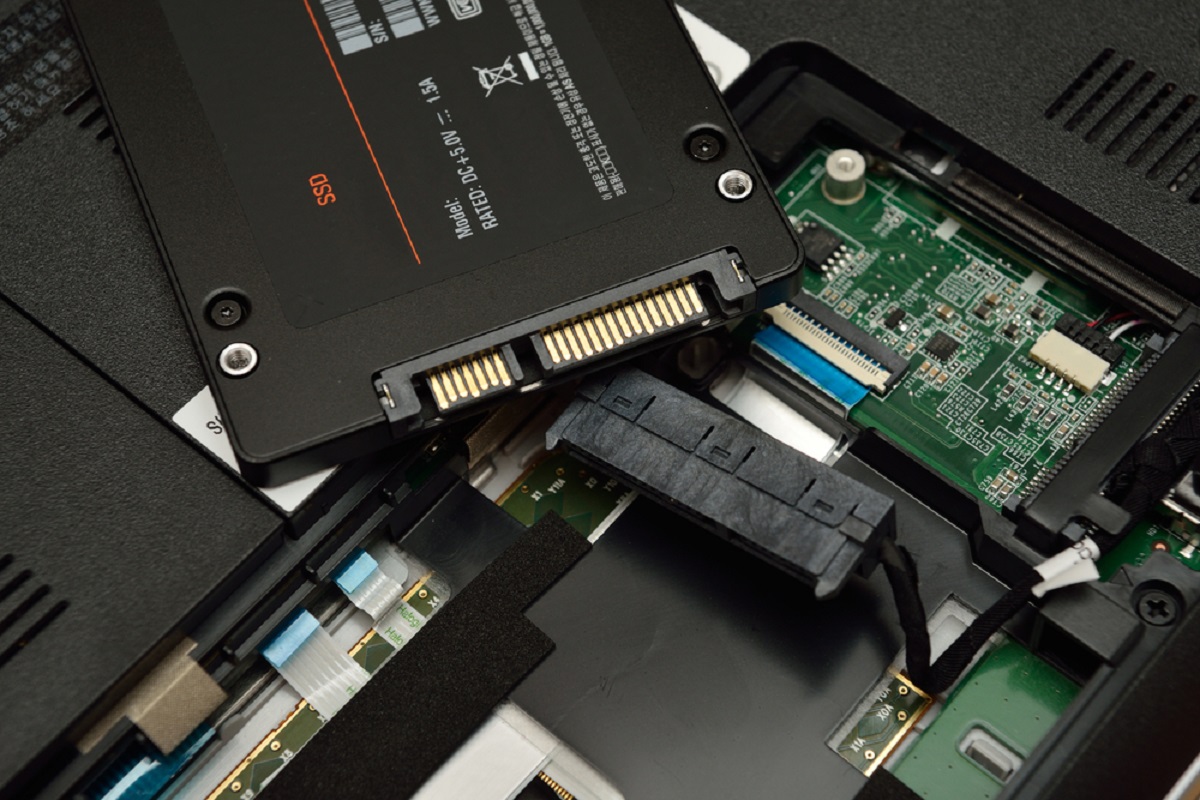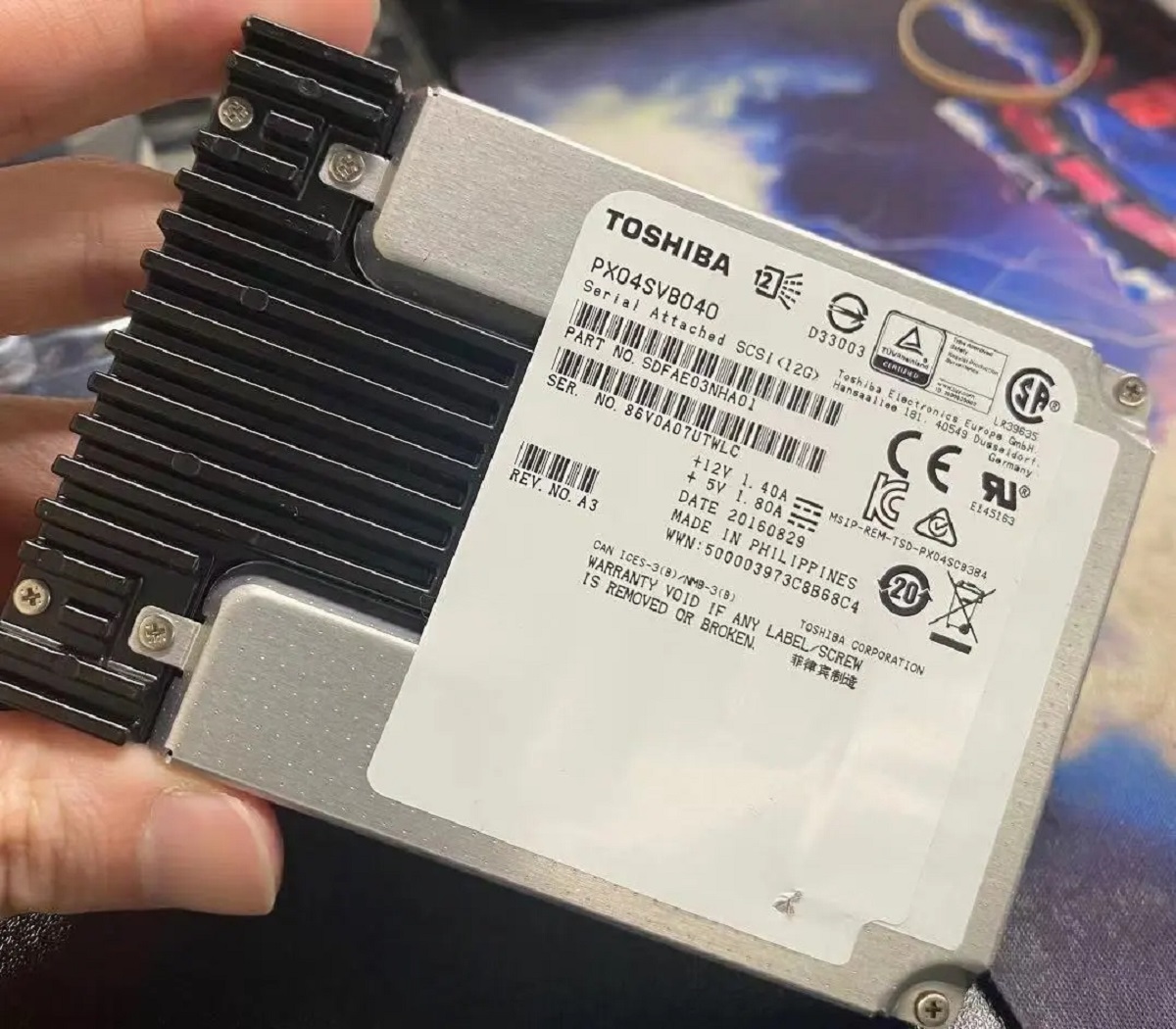Introduction
Welcome to the world of solid state drives (SSDs), the future of storage technology. As technology continues to advance, traditional hard disk drives (HDDs) are gradually being replaced by faster, more reliable SSDs in various electronic devices like laptops, desktops, and even smartphones. But have you ever wondered how information is stored on these sleek and compact SSDs?
Unlike HDDs, which use spinning platters and read/write heads to access data, SSDs utilize a different mechanism based on a technology called NAND flash memory. This innovative technology offers several advantages over traditional hard drives, including increased speed, durability, and energy efficiency.
In this article, we will take a closer look at how data is stored on a solid state drive and explore the inner workings of NAND flash memory. Understanding this process will not only satisfy your curiosity but also provide insights into the importance of optimizing SSDs for better performance.
So, let’s dive into the fascinating world of SSDs and unravel the secrets behind their efficient and reliable data storage.
Solid State Drive (SSD) Basics
A solid state drive (SSD) is a storage device that uses NAND flash memory to store and retrieve data. Unlike traditional hard disk drives (HDDs) that rely on spinning platters and read/write heads, SSDs have no moving parts. This key difference gives SSDs several advantages, including faster access times, lower latency, and improved durability.
SSDs come in various form factors, including 2.5-inch drives for laptops and desktops, M.2 cards for ultra-thin laptops and small form factor PCs, and PCIe cards for high-performance storage solutions. Regardless of the form factor, the underlying technology remains the same.
The primary component of an SSD is the NAND flash memory, which is a type of non-volatile memory that retains data even when the power is turned off. This makes it ideal for long-term storage requirements. The NAND flash memory is organized into cells, pages, blocks, and planes, which we will explore in more detail in the next sections.
An SSD also contains a controller, which acts as the brain of the drive, managing the data transfer between the host system and the NAND flash memory. The controller is responsible for performing tasks like error correction, wear leveling, and garbage collection to ensure optimal performance and longevity of the drive.
Overall, SSDs are designed to provide faster and more reliable storage solutions compared to HDDs. Thanks to advancements in technology, SSDs have become more affordable and accessible, making them the preferred choice for both consumer and enterprise applications.
NAND Flash Memory
NAND flash memory is the foundation of solid state drives (SSDs) and is responsible for storing and retrieving data. It is a type of non-volatile memory, which means it retains data even when the power is turned off. This makes NAND flash memory ideal for long-term storage and enables SSDs to offer faster and more reliable performance compared to traditional hard disk drives (HDDs).
NAND flash memory stores data in individual memory cells, which are organized into pages, blocks, and planes. Each memory cell can store multiple bits of data, typically either one bit (single-level cell or SLC) or two bits (multi-level cell or MLC). MLC NAND flash memory provides higher storage density but may have slightly slower performance and reduced endurance compared to SLC NAND flash memory.
Within a NAND flash memory chip, the data is stored by trapping electrons within the floating gate of a transistor. Applying an electrical charge to the control gate allows data to be written onto the floating gate, while reading the data involves detecting the presence or absence of trapped electrons. To ensure data integrity, error correction techniques like error correcting code (ECC) are employed.
One of the challenges with NAND flash memory is the limited lifespan of each memory cell. Every time data is written to a cell, it causes a certain level of stress that gradually reduces the cell’s ability to retain data accurately. To mitigate this issue, SSDs employ wear leveling, which evenly distributes write operations across all memory cells. This helps to prolong the lifespan of the drive by minimizing the wear and tear on individual cells.
In addition to wear leveling, SSDs also utilize a process called garbage collection. When data is deleted or overwritten, the cells that previously held that data are marked as invalid. However, the actual erasure of data is usually performed during idle periods to reduce performance impact. Garbage collection involves identifying the invalid data and reclaiming those blocks to be used again for new data, thus optimizing the storage capacity and maintaining performance over time. This process is managed by the SSD controller.
Overall, NAND flash memory is the key technology that enables SSDs to deliver fast, reliable, and durable storage solutions. Understanding how NAND flash memory works is crucial to grasp the inner workings of an SSD and appreciate its performance benefits over traditional HDDs.
Cells and Pages
Cells and pages are the building blocks of NAND flash memory, the technology behind solid state drives (SSDs). Understanding how these components work is essential to comprehend how data is stored and accessed on an SSD.
Each cell in NAND flash memory can store multiple bits of data, typically one bit (SLC) or two bits (MLC). The number of bits stored per cell determines the storage density and affects performance and endurance. SLC NAND flash memory provides higher performance and durability but at a higher cost, while MLC NAND flash memory offers greater storage capacity at a lower cost.
In a NAND flash memory chip, cells are arranged into pages. A typical page size is 4KB, although larger page sizes like 8KB or 16KB are also used in some SSDs. When data is written to an SSD, it is stored in these pages. Each page can hold a certain amount of data, usually between 2KB to 4KB, depending on the specific SSD design.
Unlike traditional hard disk drives (HDDs), SSDs cannot directly overwrite existing data in a page. Instead, an entire page must be erased before new data can be written. This process, known as the erase-before-write operation, introduces complications in terms of performance and wear on the NAND flash memory cells.
To mitigate the impact of the erase-before-write operation, SSDs perform a process called write amplification. When new data needs to be written, the SSD controller first reads the entire block containing the target page, modifies the target page along with any other pages that require updating, and then rewrites the modified data back to a new block. This technique ensures that only one erase operation is needed per block, reducing write amplification and optimizing performance.
It’s important to note that the erase operation takes significantly longer than write or read operations. This can affect the overall performance of an SSD, especially during heavy write-intensive workloads. SSD manufacturers implement various techniques, such as advanced algorithms and additional cache, to minimize the impact of the erase operation and provide a smooth and efficient user experience.
In summary, cells and pages are the fundamental components of NAND flash memory in an SSD. Cells store bits of data, while pages hold the actual data. Understanding how these elements work and the challenges they pose in terms of erase-before-write and write amplification is critical to appreciating the intricacies of data storage on an SSD.
Blocks and Planes
Blocks and planes play a crucial role in the structure and organization of data in a solid state drive (SSD), which is based on NAND flash memory technology. Understanding how these components work is essential for comprehending how data is stored and managed within an SSD.
A block is a group of multiple pages in NAND flash memory, typically ranging from 64 to 256 pages depending on the SSD design. The size of a block can vary, but a common size is 256KB per block. When data is written to an SSD, it is written in pages, and a block is the smallest unit that can be erased. This means that when new data needs to be written, an entire block must be erased before the data can be rewritten.
The erase operation is a time-consuming process in NAND flash memory, taking significantly longer than reading or writing operations. To optimize performance and minimize the impact of erasing, SSD controllers use techniques such as wear leveling and garbage collection, which we’ll explore further in later sections.
Another important concept in NAND flash memory is planes. A plane consists of multiple blocks. SSDs can have one or more planes, depending on the design and technology. Separate planes allow simultaneous read and write operations, enabling faster data transfers compared to single-plane SSDs.
By dividing the NAND flash memory into multiple planes, SSDs can effectively perform parallel operations, increasing overall data throughput. Each plane has its own set of blocks, and the SSD controller can access and manage data within each plane independently. This parallelization helps to achieve higher performance and better utilization of the NAND flash memory.
Furthermore, SSD controllers implement techniques like wear leveling and wear-based block management to ensure even distribution of write operations across all blocks and planes. Wear leveling prevents certain blocks from experiencing excessive write wear, which could lead to early failure of the drive. By evenly distributing write operations, SSDs can maximize the lifespan and durability of the storage device.
Overall, blocks and planes are foundational components in SSDs, determining how data is organized and how write and erase operations are managed. Understanding the role of blocks and planes in an SSD’s architecture is crucial in appreciating the performance and reliability benefits of solid state drives.
Organization of Data on an SSD
The organization of data on a solid state drive (SSD) is a complex process that involves managing the allocation and retrieval of data within the NAND flash memory. Understanding how data is organized is crucial for optimizing performance and maintaining the longevity of the SSD.
SSDs store data in blocks, which are composed of multiple pages. Each page typically holds a few kilobytes of data. When data is written to an SSD, it is first stored in free pages within the blocks. As more data is written, these pages fill up, and when a block becomes full, it needs to be erased before new data can be written to it.
The process of erasing a block can significantly impact the performance of an SSD. To mitigate this, SSDs use a technique called wear leveling. Wear leveling ensures that data is evenly distributed across all blocks, preventing specific blocks from experiencing higher levels of wear due to excessive writes. By spreading out the data, wear leveling helps to extend the lifespan of the SSD.
In addition to wear leveling, SSDs employ a process known as garbage collection. Garbage collection identifies blocks that contain invalid or deleted data and recovers them for reuse. When data is deleted or overwritten, the SSD controller marks the corresponding pages or blocks as invalid. However, actual erasure occurs during idle times to minimize the impact on performance. Garbage collection helps optimize storage capacity and maintain performance by freeing blocks that are no longer in use.
SSDs also implement a technique called over-provisioning, where a portion of the NAND flash memory is reserved for background operations like wear leveling and garbage collection. This reserved space helps maintain the overall performance and longevity of the SSD by providing ample room for managing data and maintaining optimal performance levels.
Furthermore, the SSD controller plays a critical role in organizing data. It manages the mapping of logical addresses to physical addresses, ensuring that data is stored and retrieved correctly. The controller also incorporates advanced algorithms and firmware optimizations to enhance performance and maintain data integrity.
Overall, the organization of data on an SSD involves a careful balance of wear leveling, garbage collection, over-provisioning, and intelligent management by the SSD controller. Understanding these processes is crucial for optimizing the performance, reliability, and lifespan of an SSD, ensuring that it continues to provide fast and efficient storage for years to come.
File System and SSD
The file system plays a vital role in the interaction between an operating system and a solid state drive (SSD). It defines how data is organized and stored on the SSD, impacting both performance and overall efficiency. When using an SSD, it is important to consider the file system’s compatibility and optimization for SSD technology.
One commonly used file system is the File Allocation Table (FAT) system, which is widely supported across different operating systems. However, FAT is not specifically designed for SSDs and may not fully utilize the performance advantages offered by these storage devices.
Modern file systems, such as NTFS (New Technology File System) for Windows and EXT4 (Fourth Extended File System) for Linux, have been developed with SSDs in mind. These file systems implement various optimization techniques to improve performance and enhance the lifespan of the SSD.
One crucial optimization is the reduction of unnecessary read and write operations. SSDs have limited endurance, meaning they can only handle a finite number of write cycles before their performance begins to degrade. File systems designed for SSDs implement techniques like TRIM, which informs the SSD which blocks of data are no longer needed, allowing the drive to proactively free up space and enhance overall performance.
Another optimization technique is the alignment of data. SSDs operate best when data is written in aligned blocks, typically 4KB or 8KB in size. File systems that support SSDs efficiently align data to these block boundaries, reducing write amplification and maximizing performance.
Caching is another aspect of file system optimization for SSDs. Caching involves temporarily storing frequently accessed data in a cache, reducing the need for repeated read operations from the SSD. This can significantly improve overall system responsiveness and reduce wear on the SSD.
Overall, optimizing the file system for an SSD can greatly enhance the performance, lifespan, and efficiency of the drive. Choosing a file system specifically designed for SSDs and utilizing features like TRIM, aligned data, and caching can ensure optimal performance and longevity.
It’s important to note that when formatting an SSD, it is essential to use the appropriate file system and alignment settings to ensure compatibility and performance. Checking the SSD manufacturer’s recommendations and consulting the operating system documentation can help determine the best file system options for your specific SSD.
Read and Write Operations on an SSD
Read and write operations form the backbone of data storage and retrieval on a solid state drive (SSD). Understanding how these operations work is crucial for optimizing the performance and efficiency of an SSD.
When it comes to reading data from an SSD, the process is relatively straightforward. The requesting software or operating system sends a read command to the SSD controller, specifying the logical address of the data to be retrieved. The controller maps this logical address to the corresponding physical address within the NAND flash memory and retrieves the data. The retrieved data is then transferred back to the requesting software or operating system.
Read operations on an SSD are typically faster than those on traditional hard disk drives (HDDs) due to the absence of mechanical components. The lack of moving parts allows SSDs to provide lower latency and faster access times, resulting in quicker data retrieval.
On the other hand, write operations on an SSD are more complex. When new data needs to be written, the SSD controller first identifies a free page within a block and writes the data to that page. However, because an entire block must be erased before new data can be written, the controller performs a background process known as garbage collection.
Garbage collection ensures that empty pages within blocks are identified and marked as available for future data writes. The controller then moves valid data from partially filled blocks to new blocks, freeing up the original block for erase and reuse. This process helps to maximize space utilization and maintain optimal performance by minimizing write amplification.
It’s important to note that repeated write operations can gradually degrade the performance of an SSD. This is due to the physical limitations of NAND flash memory, which has a limited number of write cycles before it starts to deteriorate. To mitigate this issue, SSD controllers employ wear leveling. Wear leveling evenly distributes write operations across all blocks and ensures that each block receives a similar amount of wear over time, maximizing the lifespan of the drive.
Overall, read and write operations on an SSD are critical components of the data storage and retrieval process. SSDs leverage their non-mechanical design to provide faster read operations, but write operations require additional management through techniques like garbage collection and wear leveling. Understanding how these operations function allows for better optimization and utilization of an SSD’s performance and lifespan.
Wear Leveling and Garbage Collection
Wear leveling and garbage collection are essential techniques implemented in solid state drives (SSDs) to optimize performance, maximize lifespan, and maintain efficiency. These processes help overcome the inherent limitations of NAND flash memory technology.
Wear leveling is a technique used to evenly distribute write operations across all blocks in an SSD. NAND flash memory has a limited number of write cycles before it starts to degrade, so certain blocks could wear out faster if they are constantly written to. Wear leveling ensures that every block in the SSD receives a similar amount of wear over time, prolonging the lifespan of the drive. The SSD controller manages wear leveling by dynamically mapping logical addresses to physical addresses, effectively spreading the write load across the entire SSD.
Garbage collection is another important process in SSDs. When data is deleted or overwritten, the corresponding blocks become invalidated and need to be cleared for future use. This erasure process, called garbage collection, involves identifying and reclaiming these invalidated blocks. Garbage collection is performed during idle periods to minimize performance impact. The SSD controller moves the valid data from partially filled blocks to new blocks, allowing the original blocks to be erased and reused. By doing so, garbage collection optimizes storage capacity and maintains performance over time.
Both wear leveling and garbage collection play significant roles in enhancing SSD performance. Wear leveling prevents individual blocks from being excessively worn out, avoiding premature failure and maintaining consistent performance across the entire drive. Garbage collection ensures efficient use of the SSD’s storage capacity by reclaiming blocks that are no longer in use, optimizing both performance and space utilization.
It is important to note that wear leveling and garbage collection are managed by the SSD controller’s firmware. Different manufacturers may implement these processes with varying algorithms and efficiency levels. More advanced controllers employ sophisticated algorithms to ensure effective wear leveling and garbage collection, resulting in better performance and longevity of the SSD.
Although wear leveling and garbage collection are effective techniques, it is crucial to regularly monitor the health and performance of an SSD. Various monitoring tools and utilities are available to provide insights into the SSD’s wear level, remaining lifespan, and performance. Monitoring the SSD allows users to make informed decisions regarding storage usage, backups, and potential upgrades as necessary.
In summary, wear leveling and garbage collection are critical processes that enable SSDs to maintain optimal performance, longevity, and efficiency. By evenly spreading write operations across the entire drive and efficiently managing invalid data, wear leveling and garbage collection play key roles in maximizing the benefits of NAND flash memory technology and ensuring the endurance and reliability of SSDs.
Conclusion
Solid state drives (SSDs) have revolutionized the world of storage by offering faster, more reliable, and energy-efficient alternatives to traditional hard disk drives (HDDs). Understanding how information is stored on an SSD can help users optimize its performance and make informed decisions about its usage.
SSDs utilize NAND flash memory, a non-volatile memory technology that ensures data retention even when the power is turned off. Cells, pages, blocks, and planes are the foundational components of NAND flash memory, enabling efficient data storage and retrieval on an SSD.
Organizing data on an SSD involves wear leveling and garbage collection. Wear leveling ensures that write operations are distributed evenly across all blocks, preventing certain blocks from experiencing higher levels of wear. Garbage collection identifies and reclaimes invalid blocks, optimizing storage capacity and maintaining performance over time.
The file system used on an SSD also plays a crucial role. Choosing a file system that is compatible with and optimized for SSDs, such as NTFS or EXT4, can maximize performance and efficiency. Features like TRIM, aligned data, and caching are incorporated into modern file systems to enhance SSD performance and lifespan.
Read and write operations are fundamental to data storage and retrieval on an SSD. SSDs offer faster read operations compared to HDDs, thanks to their non-mechanical design. Write operations involve background processes like garbage collection, which help maintain optimal performance despite the challenges of NAND flash memory.
By understanding the inner workings of an SSD, users can effectively harness its capabilities. Monitoring the health and performance of the SSD is crucial for making informed decisions about storage usage and potential upgrades.
In conclusion, solid state drives are the future of storage technology. Through an understanding of how information is stored on an SSD, users can optimize its performance and longevity, ensuring a fast and reliable storage solution for their data needs.







